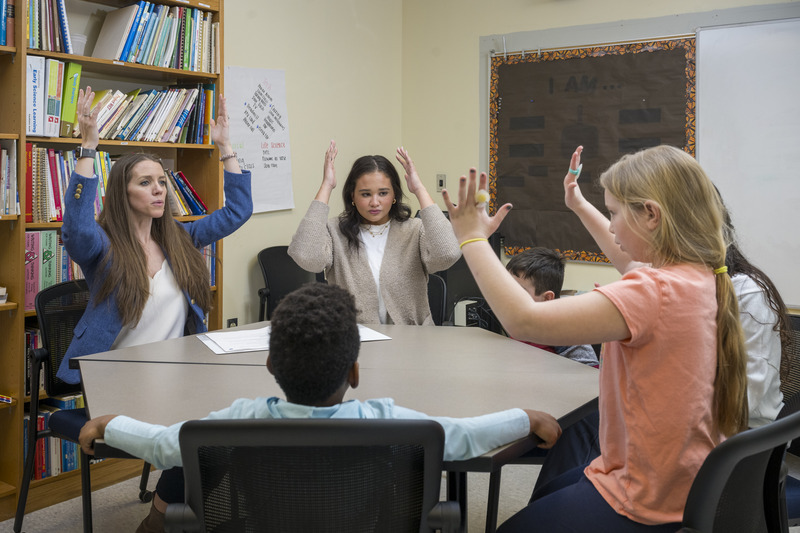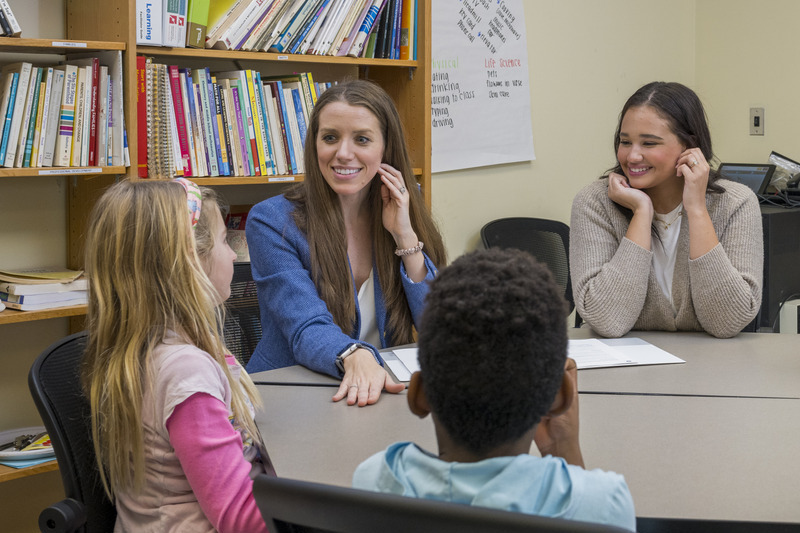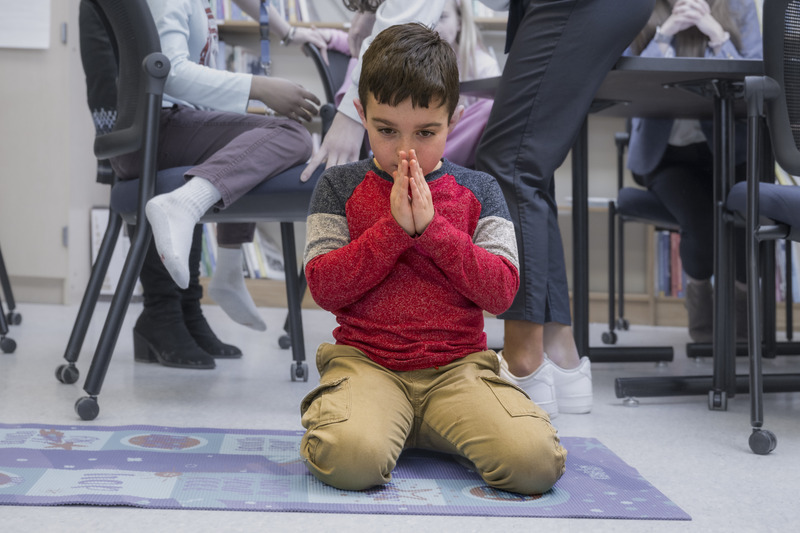School of Education
Reducing Anxiety in Elementary School Students

UD professor examines the efficacy and usability of Calm Cat, an intervention program that combines behavioral skills training with mentor-based coaching
According to the U.S. Department of Health and Human Services, nearly 12% of children and adolescents between the ages of 3 and 17 experience an anxiety or mood disorder, and symptoms can begin even before elementary school. Our schools can play an important role in addressing anxiety disorders, but educators need programs that are effective, feasible and easily implemented without specialized support.
In a new study published in School Psychology Review, University of Delaware Assistant Professor Brittany N. Zakszeski and her co-authors Elizabeth Banks and Timothy Parks evaluate a mental health intervention for elementary school students with these criteria in mind. Together, they examine the efficacy and usability of Calm Cat, an intervention program that combines behavioral skills training with mentor-based coaching. Zakszeski and her co-authors found that the program increased students’ knowledge of relaxation techniques and decreased their self-reported anxiety symptoms. Facilitators found the program to be easy to use and efficient.
“Schools have access to a variety of efficient interventions for promoting students’ social, emotional and behavioral wellbeing, but few among them target internalizing concerns like anxiety,” said Zakszeski, who specializes in school psychology within UD’s College of Education and Human Development. “Even fewer are designed for K-12 schools’ youngest students and to be implemented by school professionals without specialized training. This program addresses each of those gaps.”

Introducing the Calm Cat
Designed by Zakszeski, Calm Cat uses verbal explanations of new skills, visual supports like illustrations and notecards and mentor modeling to help educators support children who are at risk for internalizing behaviors. These behaviors include symptoms of emotional distress that manifest “within” the individual such as anxiety, depression and social withdrawal.
Schools often have programs that support students with externalizing behaviors — distress that manifests in an outward, sometimes disruptive display of emotion like aggression or hyperactivity. But many of the interventions available for internalizing behaviors use cognitive behavioral therapy techniques, which may be too advanced for young children and often require specialized support from a mental health professional.
By contrast, Calm Cat uses an approach that teaches elementary students relaxation techniques using developmentally appropriate methods. Over the course of five weekly, 30-minute sessions, students learn specific techniques, like deep breathing, peaceful visualization and releasing tension from your muscles. They also learn how to identify when to use a relaxation technique across different contexts.
The program also uniquely combines the teaching of these relaxation techniques with a mentoring component that allows students sustained opportunities for practice and feedback. Using supportive materials — like notecards with visual prompts for the students — designated Calm Cat coaches check in with the students three times a day for five weeks. During these check-ins, the coaches provide feedback on students’ emotional regulation and encourage student self-reflection.

“The youth mental health crisis is persisting, in part, because of the shortage of mental health professionals, including school-based mental health professionals,” Zakszeski said. “Thus, developing a program that could only be implemented by mental health professionals did not seem to me to be a high-impact, scalable solution. This program can be implemented by educators, providing more flexible implementation options to schools with varying staffing levels and structures.”
Evaluating the Calm Cat program
After a multi-year development process, Zakszeski and her research team piloted the Calm Cat program with 72 students in nine elementary schools across three school districts in the mid-Atlantic United States. Now, with the publication of Zakszeski’s study, there is strong initial evidence that the program is working.
After five weeks of participating in the Calm Cat program, students consistently demonstrated greater gains in their understanding of relaxation techniques in a survey compared to students who did not participate. In addition, these students reported fewer overall anxiety symptoms compared to students who did not participate, as well as reduced symptoms related to generalized anxiety, social anxiety and somatic or physical symptoms.

“I loved Calm Cat! Our school has been using a social-emotional learning program for a while but really needed a more intensive option for students with early mental health concerns,” said one of the elementary school facilitators. “The other programs I considered were very long, expensive or not at all suitable for my students and school. The Calm Cat materials were easy to use and kid-friendly.”
The positive effects of the program also appear to be lasting: At a two-month follow-up, students who participated in Calm Cat continued to report decreased anxiety symptoms compared to those who did not participate.
“I really appreciated the direct skills training approach and active participation opportunities in each lesson. My kiddos were very engaged and made some great gains,” said one of the elementary school facilitators.
In future research, Zakszeski will continue to refine and evaluate the Calm Cat program, as well as other school-based intervention programs.
To learn more about CEHD research in school psychology or social and emotional development, visit CEHD’s research page.
Photos by Kathy F. Atkinson



